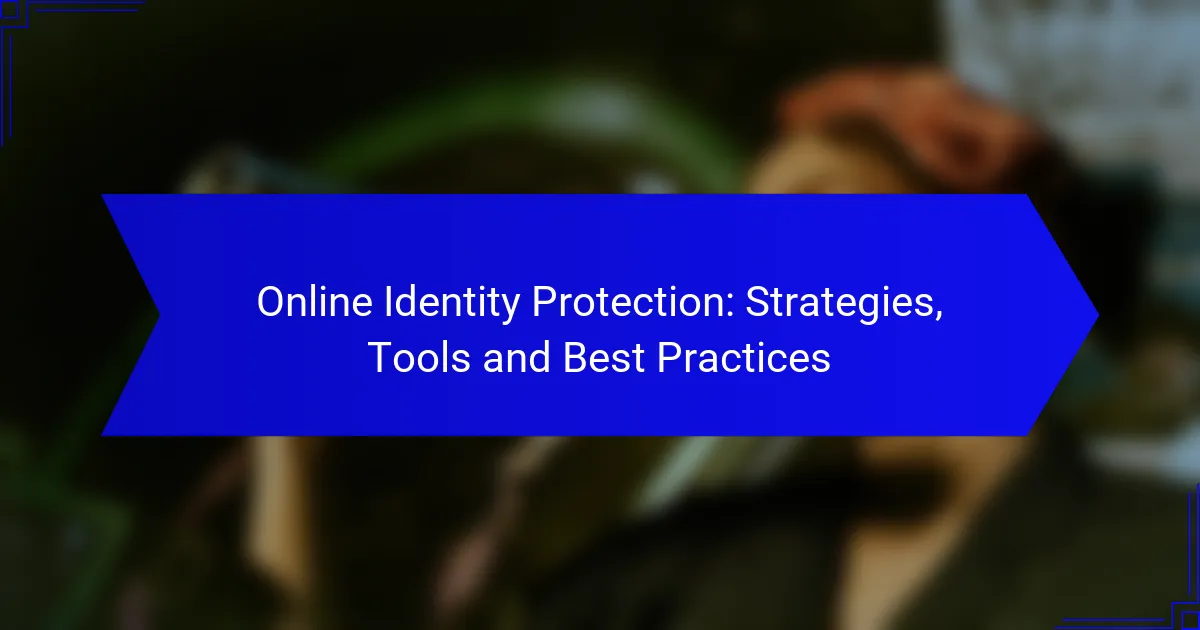In today’s digital age, protecting your online identity is crucial to safeguarding your personal information from cyber threats. Effective strategies include using strong passwords, enabling two-factor authentication, and regularly monitoring your online presence. By leveraging specialized tools and services, individuals can enhance their security and reduce the risk of identity theft.
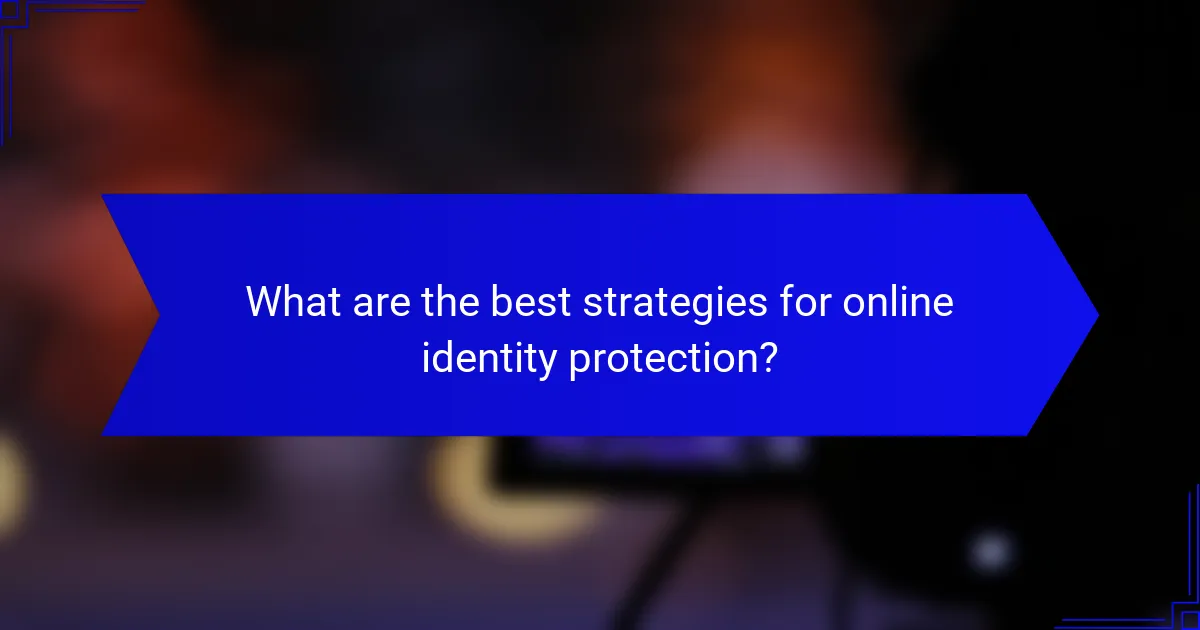
What are the best strategies for online identity protection?
The best strategies for online identity protection include using strong passwords, enabling two-factor authentication, regularly updating privacy settings, monitoring your online presence, and educating yourself about phishing attacks. Implementing these practices can significantly reduce the risk of identity theft and unauthorized access to your accounts.
Use strong, unique passwords
Creating strong, unique passwords for each of your accounts is crucial for online identity protection. A strong password typically includes a mix of uppercase and lowercase letters, numbers, and special characters, and should be at least 12 characters long. Avoid using easily guessable information such as birthdays or common words.
Consider using a password manager to generate and store complex passwords securely. This tool can help you maintain unique passwords across different sites without the need to remember each one.
Enable two-factor authentication
Two-factor authentication (2FA) adds an extra layer of security by requiring a second form of verification in addition to your password. This could be a code sent to your mobile device or an authentication app. Enabling 2FA can significantly reduce the likelihood of unauthorized access, even if your password is compromised.
Many online services now offer 2FA as a standard feature. Always opt for this additional security measure when available, as it greatly enhances your account’s protection.
Regularly update privacy settings
Regularly reviewing and updating your privacy settings on social media and online accounts is essential for maintaining control over your personal information. Check who can see your posts, who can contact you, and what information is publicly visible. Adjust these settings to limit exposure to only trusted contacts.
Be aware of changes in privacy policies and settings, as platforms often update their terms. Staying informed can help you protect your identity effectively.
Monitor online presence
Monitoring your online presence involves regularly checking what information about you is available on the internet. Search for your name and review the results to see if any personal information is publicly accessible. Set up alerts for your name to stay updated on new mentions.
Consider using services that offer identity monitoring, which can notify you of potential data breaches or unauthorized use of your personal information. This proactive approach can help you respond quickly to any threats.
Educate on phishing attacks
Understanding phishing attacks is vital for online identity protection. Phishing typically involves fraudulent communications that appear to be from reputable sources, aiming to steal sensitive information. Be cautious of unsolicited emails or messages asking for personal details or prompting you to click on links.
To protect yourself, always verify the sender’s identity before responding to requests for information. Use official channels to contact organizations directly if you receive suspicious communications.
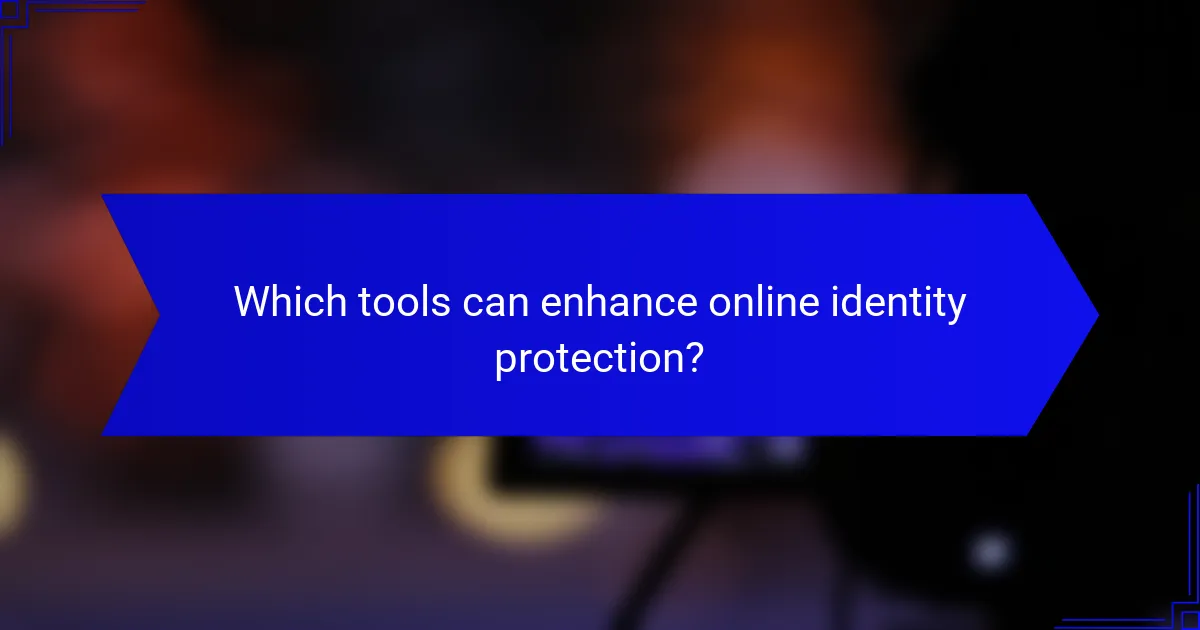
Which tools can enhance online identity protection?
Several tools can significantly enhance online identity protection by managing passwords, monitoring for breaches, and providing comprehensive security features. Utilizing these tools can help individuals maintain their privacy and safeguard their personal information from cyber threats.
LastPass for password management
LastPass is a password management tool that securely stores and encrypts your passwords, allowing you to access them easily across devices. It generates strong, unique passwords for each of your accounts, reducing the risk of credential theft.
To maximize its effectiveness, enable two-factor authentication (2FA) for an added layer of security. Regularly update your master password and consider using the security challenge feature to identify weak or reused passwords.
Dashlane for security alerts
Dashlane offers real-time security alerts that notify users of potential breaches or compromised accounts. This proactive approach allows you to take immediate action, such as changing passwords or enabling additional security measures.
Additionally, Dashlane provides a password health report, helping you identify weak passwords and suggesting improvements. Regularly reviewing these alerts can significantly enhance your overall online security posture.
Identity Guard for monitoring
Identity Guard specializes in monitoring your personal information across various databases to detect potential identity theft. It scans the dark web for your data and alerts you if your information is found, allowing you to respond quickly.
Consider using its credit monitoring feature, which tracks changes in your credit report and alerts you to suspicious activities. This can be particularly useful in preventing identity theft before it escalates.
Norton 360 for comprehensive protection
Norton 360 provides a suite of security features, including antivirus protection, a firewall, and a VPN for secure browsing. This all-in-one solution helps protect your devices from malware and online threats while safeguarding your personal information.
For optimal protection, ensure that automatic updates are enabled, and regularly run system scans. Utilizing the VPN feature while on public Wi-Fi can further enhance your online privacy and security.
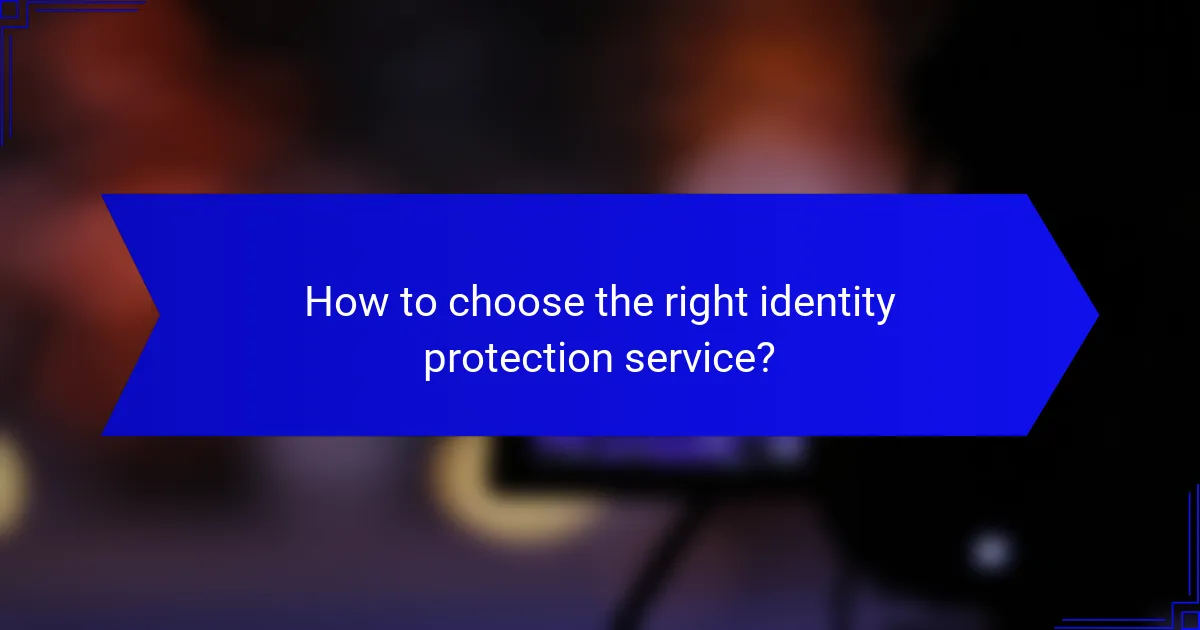
How to choose the right identity protection service?
Choosing the right identity protection service involves evaluating features, pricing, customer feedback, and support options. A well-rounded service should offer comprehensive coverage tailored to your needs while remaining within your budget.
Evaluate features and coverage
When assessing identity protection services, focus on the features they offer. Look for services that provide monitoring for personal information, credit reports, and identity theft insurance. Coverage should ideally extend to various types of identity theft, including financial and medical.
Consider additional features such as dark web monitoring and social media protection. These can enhance your security by alerting you to potential threats before they escalate.
Compare pricing plans
Pricing plans for identity protection services can vary significantly, typically ranging from low monthly fees to higher annual subscriptions. Basic plans may offer essential monitoring, while premium options often include advanced features like insurance and recovery assistance.
Evaluate what each plan includes and determine if the cost aligns with your specific needs. Some services may offer family plans, which can provide better value if you want to protect multiple individuals.
Check customer reviews
Customer reviews can provide valuable insights into the effectiveness and reliability of identity protection services. Look for feedback on the service’s performance, ease of use, and responsiveness to issues.
Pay attention to both positive and negative reviews to get a balanced view. Websites like Trustpilot or Consumer Reports can be good sources for genuine user experiences.
Assess customer support options
Strong customer support is crucial when dealing with identity protection services. Check if the service offers multiple support channels, such as phone, email, and live chat, and their availability hours.
Consider the quality of support as well; services that provide 24/7 assistance can be particularly beneficial in emergencies. Look for reviews that mention the responsiveness and helpfulness of the support team to gauge their reliability.
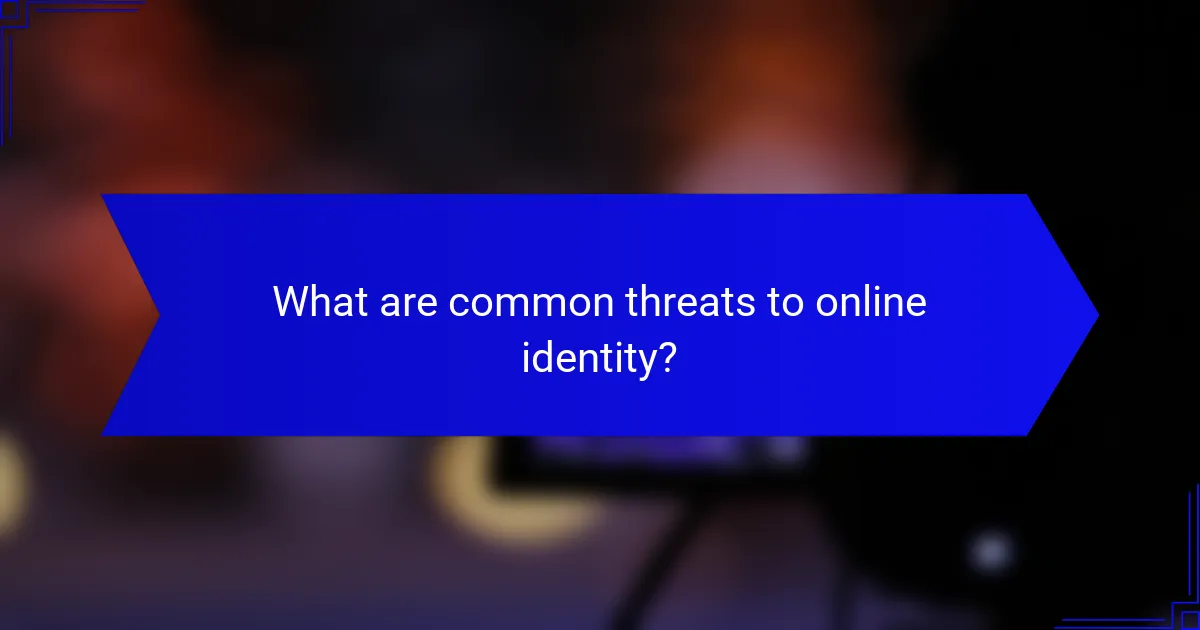
What are common threats to online identity?
Common threats to online identity include phishing scams, data breaches, malware attacks, and social engineering tactics. These threats can lead to unauthorized access to personal information, financial loss, and damage to reputation.
Phishing scams
Phishing scams are deceptive attempts to obtain sensitive information by masquerading as a trustworthy entity. These scams often come in the form of emails or messages that urge individuals to click on malicious links or provide personal data.
To protect against phishing, always verify the sender’s email address and avoid clicking on links from unknown sources. Look for signs of phishing, such as poor grammar or urgent requests for information.
Data breaches
Data breaches occur when unauthorized individuals gain access to sensitive data, often through hacking or inadequate security measures. This can lead to the exposure of personal information, including passwords and financial details.
To mitigate the risk of data breaches, use strong, unique passwords for different accounts and enable two-factor authentication whenever possible. Regularly monitor your accounts for unusual activity and consider using a credit monitoring service.
Malware attacks
Malware attacks involve malicious software designed to infiltrate and damage devices or networks. Common types of malware include viruses, ransomware, and spyware, which can compromise personal information and disrupt operations.
To defend against malware, keep your operating system and software updated, use reputable antivirus programs, and avoid downloading files or applications from untrusted sources. Regularly back up important data to recover from potential attacks.
Social engineering tactics
Social engineering tactics manipulate individuals into divulging confidential information by exploiting psychological tricks. Attackers may impersonate trusted figures or create scenarios that pressure victims into compliance.
To combat social engineering, be cautious when sharing personal information and verify requests through independent channels. Educate yourself and others about common tactics used by social engineers to enhance awareness and vigilance.

How can individuals protect their online identity?
Individuals can protect their online identity by implementing various strategies that minimize their personal information exposure and enhance their security. Key practices include limiting the sharing of personal data, using strong passwords, and utilizing privacy-focused tools.
Limit personal information sharing
Limiting personal information sharing is crucial for safeguarding your online identity. Be cautious about the details you provide on social media, websites, and online forms. Only share information that is absolutely necessary and consider the implications of making certain details public.
Review your privacy settings on social media platforms to restrict who can view your information. For example, set your profiles to private and avoid posting sensitive data such as your address, phone number, or financial information. This helps reduce the risk of identity theft and unwanted attention.
Additionally, consider using pseudonyms or initials instead of your full name when signing up for services that do not require identification. This simple change can significantly reduce the amount of personal data available to potential threats.
